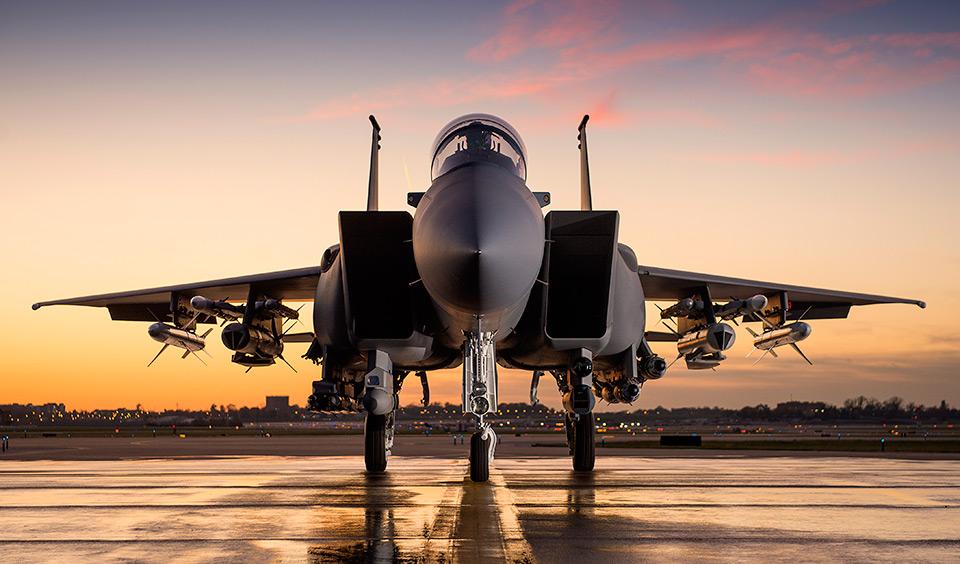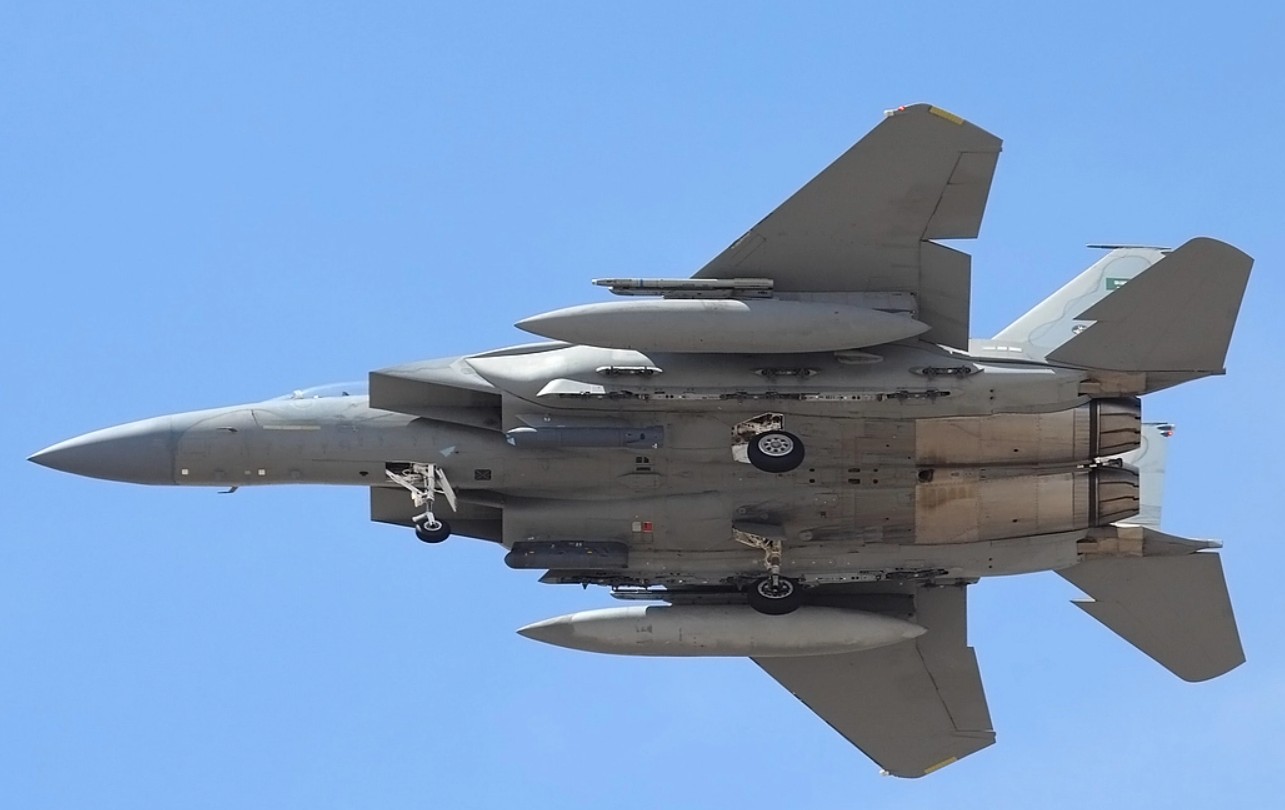A Royal Saudi Air Force (RSAF) F-15S air superiority fighter crashed at the King Abdulaziz Air Base training grounds due to a technical malfunction during a routine night-time exercise, reported the Saudi Press Agency on November 7, citing a Saudi ministry of defense.
The incident reportedly occurred on November 6, according to the Saudi Defense Ministry spokesperson, Brig. Gen. Turki Al-Maliki. The aircraft crew comprising two officers, safely ejected, and there were no injuries or losses on the ground.
Al-Maliki said that a panel is investigating the incident.
The statement by the Saudi defense ministry came soon after a video allegedly showed an F-15 jet crashing in Saudi Arabia.
A #Saudi Arabia's F-15 Fighter Aircraft crashed on October 25th, 2022 in #Taif.
The incident was not reported Officially in the media but now the video is leaked. pic.twitter.com/m6fLijsQLm— Conflict Watch PSF (@AmRaadPSF) November 3, 2022
A 21-second long video clip that appears to be filmed by a CCTV camera is doing the rounds on social media, showing a fighter jet crashing with netizens expressing that the jet could be RSAF F-15 fighter.
While the aircraft’s silhouette appears similar to the shape of an F-15, it does not seem like the plane in question is related to the crash announced by the Saudi Defense Ministry, especially considering that the incident appears to have occurred during the daytime.
Also, as per the CCTV footage, the incident occurred on October 25 and not on November 6.
The Iran Connection
Interestingly, the video showing the alleged Saudi F-15 crashing in Taif emerged after Iran announced the adoption of a new ultra-long-range electronic warfare system similar to the Russian-made Krasukhas.
Assuming the aircraft in question is indeed an F-15, it still cannot be said for sure if it is F-15SA (Saudi Advanced) or the F-15C/D, but the latter seems more likely, considering the No. 5 & 34 Squadrons of the RSAF Wing 2 at the King Fahad Air Base in Taif operate the F-15C/Ds.
The F-15SA is derived from the two-seat F-15E Strike Eagle. It is claimed to be the most advanced F-15 variant, incorporating features from the F-15K Slam Eagle operated by South Korea and the F-15SG used by Singapore.

In the video, the fighter jet can be seen descending rapidly toward the ground with no traces of fire observed on the aircraft before eventually crashing.
Based on this, a Russian military portal suggested the aircraft’s control systems could have failed due to electronic jamming, noting the fighter jet allegedly crashed after Iran announced the adoption of a new electronic warfare system with a target engagement range of up to 400 kilometers.
On October 23, Afshin Naderi Sharif, Iranian Deputy Defense Minister for Industrial and Research Affairs, claimed that Iran’s air defense forces had jammed a hostile reconnaissance aircraft at a distance of 400 kilometers.
“We have been able to jam the enemy’s reconnaissance aircraft at a distance of 400 kilometers. The enemy is also aware that such know-how has been gained by the defense industry of the Islamic Republic and has been institutionalized,” he said without specifying who the enemy was or which aircraft was downed.

The new long-range electronic warfare systems could be compared to the Russian Krasukhas, according to a recent EurAsian Times report.
The Krasukha is a mobile, ground-based, electronic warfare (EW) system designed primarily for targets such as airborne radio-electronics (such as UAVs) and airborne systems guided by radar.
The system comes in multiple variants, and the Russian forces in Syria were reportedly supported with Krasukha jammers that kept the small US surveillance drones from getting GPS satellite signals.
That said, Taif is located more than 1000 kilometers away from Iran, and considering the F-15’s maximum speed of 2,575 km/h, the aircraft must have been jammed at least 30 minutes before reaching Taif, which seems highly unlikely.

According to experts, the crash (in the video) looks very similar to the recent crash of the Russian Su-30 in Irkutsk, Siberia.
Electronic jamming, as claimed by Iran, is out of the question. A catastrophic control failure appears to be the most likely reason. Whether it was pilot initiated crash or an issue with the aircraft can only be ascertained in an investigation.
Another moment of the Russian Su-30 crash in Irkutsk pic.twitter.com/UIu84Ikhlh
— ТРУХА⚡️English (@TpyxaNews) October 23, 2022
Earlier, an IAF Jaguar fighter pilot had commented on the Su-30 crash and said – a likely reason for the crash and failure to eject could have been the incapacitating negative G experienced by the crew as the Su-30SM, flying an acceptance check sortie suddenly dived sharply.”
Negative G leads to the pooling of blood in the head and the swelling of the face that eventually makes the lower eyelids forced over the eyes.
- Contact the author at tanmaykadam700(at)gmail.com.
- VIEWS PERSONAL OF THE AUTHOR
- Follow EurAsian Times on Google News




